Public Lectures
Named Professor Lectures
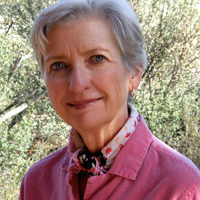 Collitz Professor: Joan Bybee, University of New Mexico
Collitz Professor: Joan Bybee, University of New MexicoPublic Lecture : Lexical and grammatical factors in sound change: a usage-based approach
Click here to view course: Directionality in Language Change
The question of whether grammatical or lexical factors can condition or block sound change has been discussed from many perspectives for more than a century without resolution. Here we consider studies of sound change in progress which show that words or phrases that are used frequently in the phonetic environment for change undergo the change before those whose use is less frequent in these contexts. Because words of different categories and with different structures also have different distributions, they may occur preferentially in certain phonetic environments. Thus apparent interference by grammatical and lexical factors can be explained by phonetic factors if we expand our notion of ‘phonetic environment’ to include frequency within the environment for change, which includes the segmental environment as well as factors that affect the degree of prominence a word receives in context.
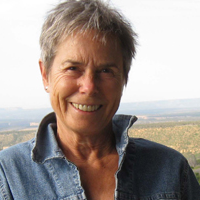 Sapir Professor: Penelope Eckert, Stanford University
Sapir Professor: Penelope Eckert, Stanford University
Click here to view course: Introduction to Sociolinguistics
Current work on the meaning of sociolinguistic variation encourages us to examine how variation relates to the larger meaning system of language. Variation is a heterogeneous social-indexical system, but what is distinctive about variation is not so much the meanings it conveys, as the way in which it conveys them. The semantic system is primarily referential, while variation is purely indexical, and in between is a range of resources that balance reference and indexicality. A growing interest among semanticists in social/expressive meaning (e.g. Potts (2007); Acton 2014; Beltrama 2016; Burnett 2016; Jeong 2016) opens the door to integrating pragmatics and variation in a wider expressive system.
Sociolinguistic variation constitutes the most performative component of the broader system of expressivity in language. Tying variation to this broader system, I will examine the range of variables from morphosyntax to voice quality, providing evidence from a wide range of studies that different kinds of variables provide material for different kinds of meanings. I propose a continuum of interiority – a range of indexicality from public and enduring facts (e.g. class, ethnicity) to states associated with an “interior self” (e.g. affect).
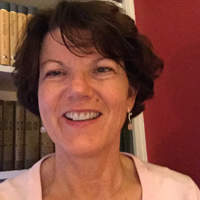 Hale Professor: Lenore Grenoble, University of Chicago
Hale Professor: Lenore Grenoble, University of ChicagoPublic Lecture: The subtlety of fieldwork: Answering the questions you are not asking
Click here to view course: Field Methods
One of the great challenges for linguists is to study a language on its own terms, to avoid biases in our analyses, biases that may be introduced by our native language(s), languages we have studied, or our by our theoretical apparatus. At the same time, the unexpected phenomena may be important for shaping our understanding of language, linguistic diversity and cross-linguistic similarity.
In this talk I discuss some strategies for mitigating some of these potential biases, and for documenting and analyzing a language on its own terms. I argue for an engaged model of fieldwork that involves, indeed requires, the active participation of language users, thoughtful attention of the linguist, and a broader view of what language is. This is a problem that Ken Hale also grappled with, and I draw on concrete examples from his own work (Hale 1992, 1998) and my own. As an illustrative case, Hale presents Damin, an auxiliary language used by Lardil men on Mornington Island in North Queen. Unlike Lardil, the Damin sound inventory (surprisingly) includes clicks. The use of an auxiliary system, with an auxiliary sound system, is unexpected and could be easily missed.
My own fieldwork finds some parallels, in particular in recent work with a team of researchers working in Cameroon, Senegal, Scandinavia and Greenland, documenting the use of clicks and other sounds that stand outside a language’s phonemic inventory but are regular parts of the communicative system. They are conventionalized and recognizable in isolation by the speakers, serving a number of discourse and pragmatic functions and are a core part of language. Examples in American English include mm-mm [ʔmʔm] ‘no’ and uh-oh [ʌʔoʊ], both of which use a glottal stop, not a phoneme in English Although they are readily recognized by speakers as having semantic meaning, such items (what I call verbal gestures) are distinguished from a language’s lexical words in that they do not take a morphosyntactic frame and thus do not combine with the grammar.
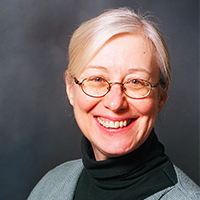 Fillmore Professor: Julia Hirschberg, Columbia University
Fillmore Professor: Julia Hirschberg, Columbia UniversityPublic Lecture: Prosodic Entrainment Across Cultures
Click here to view course: Intonation and Computation
In conversation, speakers often adapt aspects of their speaking style to the style of their conversational partner. This phenomenon goes by many names, including entrainment, adaptation, and alignment. In this talk, I will describe results from experiments on English and Mandarin prosodic entrainment in the Columbia Games Corpus and in the Tongji Games Corpus, large corpora of speech recorded from subjects playing a series of computer games. I also will discuss experiments relating entrainment to several social dimensions, including likeability and dominance, and its relationship to higher level prosodic features. Finally, I will describe experiment with systems that entrain to their users in a set of “Go-Fish” games created in English, Porteño Spanish, and Slovak, as well as other ongoing research studying entrainment in deceptive speech and in linguistic code-switching. This is joint work with Štefan Beňuš, Nishmar Cestero, Agustín Gravano, Rivka Levitan, Sarah Ita Levitan, and Zhihua Xia.
Forum Lecturers
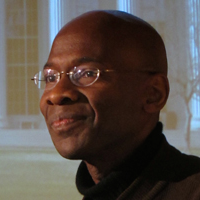
(For more details on DeGraff’s biography and research, see http://mit.edu/degraff , http://haiti.mit.edu and http://facebook.com/mithaiti )

Varieties of English in Appalachia received more public criticism than scholarly scrutiny in the twentieth century. From comic strips to popular sitcoms and eventually the world-wide web, people from Appalachia have been lampooned in public circles for their speech and other cultural traits. Early myths, such as the reference to an extant Elizabethan English in the mountains, were used as a defense for language variation; however, such myths only obscure the actual patterns of synchronic and diachronic variation in this area of the country.
Working from the foundational scholarship of Wolfram & Christian (1975, 1976), Montgomery (e.g. 1989, 2004, 2006) and others, this presentation explores a sociolinguistically empirical review of language variation patterns in speakers from Appalachia, specifically West Virginia, in order to emphasize a previously underexamined quality, namely the range of heterogeneity. Variation can be found in traditional features, both those frequently studied and socially commented on, plus those features less socially visible and shared with other dialect regions. I will lead the audience through the perceptions of Appalachian speakers, including their supposed homogeneity, low educational attainment, and Elizabethan English in order to contrast that pervasive, monolithic view with the major findings of the West Virginia Dialect Project. While some sociolinguistic variables, both morphological and phonological, are not undergoing change and others show no social marking, several demonstrate divisions between rural and non-rural speakers. Along with geographic region, orientation to higher-education, and social class, rurality guides speakers’ language variation choices and will help to determine the future of Appalachian Englishes.
By examining the full scope of language variation in Appalachia, a greater understanding of the range of vernacularity can be established. Within this continuum of Appalachian Englishes, there are no dialect features that are unique to the Appalachian region, belying the common belief that Appalachia exists in isolation from the rest of the US dialect landscape. Because there is such a contrast between the quotidian language in Appalachia and the dialect in the American imagination, outreach with communities regarding language variation is paramount for education in local schools and linguistic social justice.
 Robin Queen, University of Michigan
Robin Queen, University of MichiganIn this talk, I present two approaches to thinking about what happens when a linguist talks to a dog. The first approach is what might be considered a canonical, scholarly approach to the topic. I discuss semiotics, referentiality, and metapragmatic communication based on data drawn from interactions between shepherds and their stockdogs—as well as between shepherds talking to other shepherds about interacting with stockdogs—in the context of cooperative sheep herding.
Drawing on over a decade of ethnographic participant observation on farms and at livestock herding competitions and demonstrations throughout North America, I discuss the metapragmatics involved in conceptualizing effective mechanisms of communication with a working dog. I further illustrate how the ideologies and semiotics involved in constituting the dog as a communicative interlocutor drive both the form of the interactions with the dog and the specifics of the acoustic output directed to the dog. These interactions pivot crucially around referentiality.
I illustrate the system of whistled and verbal utterances shepherds use to communicate referentially with their dogs and then show that the prosodic qualities in shepherds’ referential whistles vary stylistically as they do in speech, particularly along the dimensions of careful and casual (Laan 1997). The similarities between stylistic modifications made to speech and those made in communicating to a dog suggest that shepherds draw on their linguistic knowledge when working with their dogs.
The second approach for thinking about what happens when a linguist talks to a dog provides a more personal reflection on what it has meant for me to talk to dogs while also building and maintaining an academic career in linguistics, one that has included experience with different kinds of institutions, different roles within institutions and within the discipline, and different moments of clarity and of questioning, including junctures at which I was advised not to pursue the questions I found most compelling. By engaging both of these approaches, I hope to illustrate how the life of the mind need not preclude or overshadow the life of the spirit.






